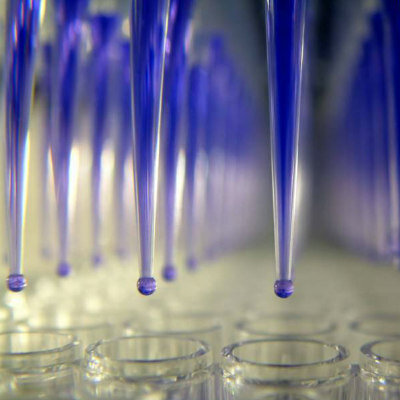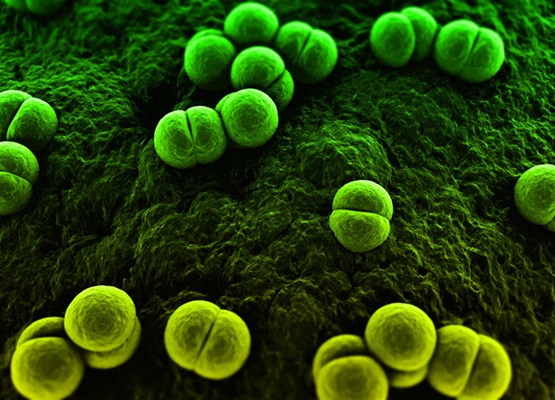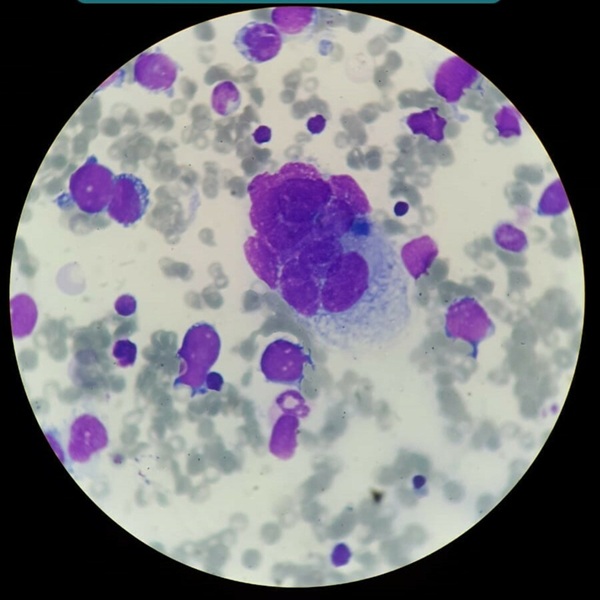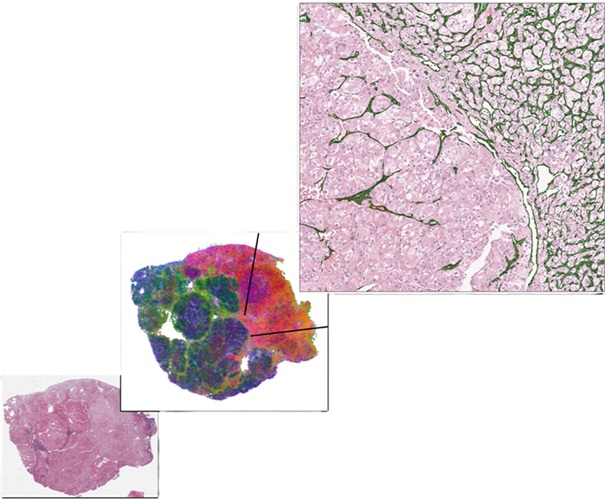Microfluidic Platform Devised for Determination of Autism Biomarker
|
By LabMedica International staff writers Posted on 27 Nov 2017 |
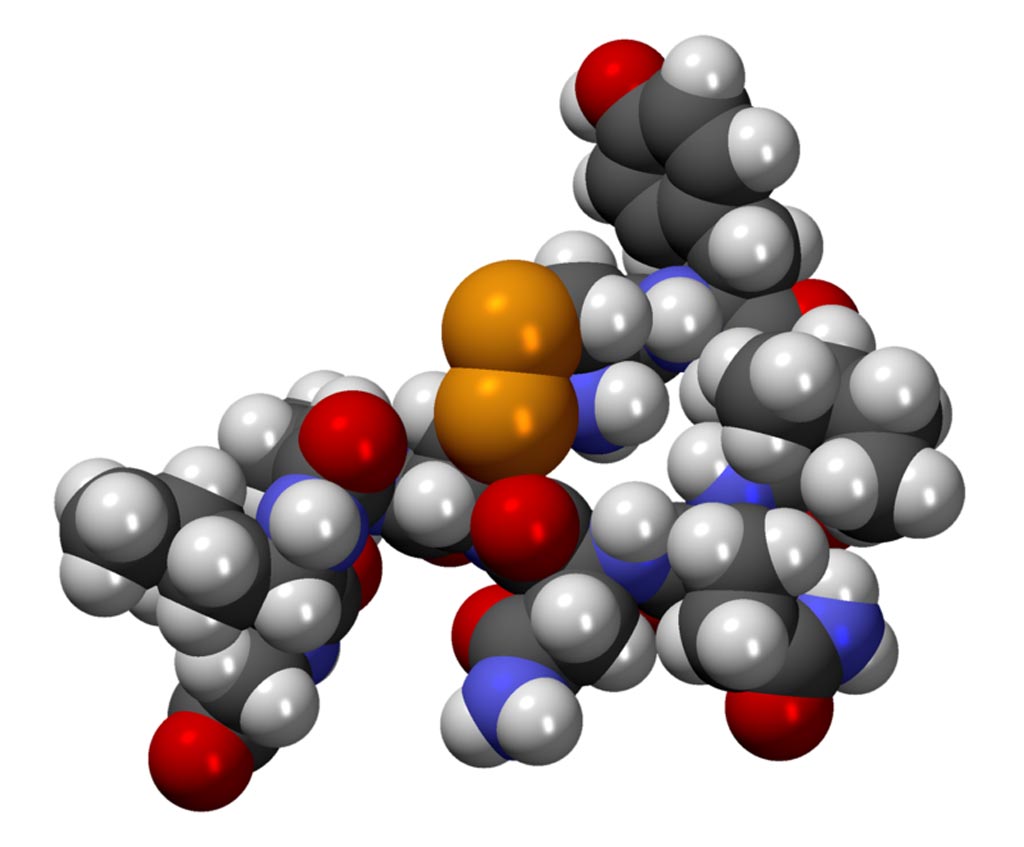
Image: A CPK model of the oxytocin molecule (Photo courtesy of Wikimedia Commons).
A team of Polish scientists has devised a unique electrochemical microfluidic platform for determination of the autism biomarker oxytocin.
Significant changes of oxytocin concentration in the blood are considered to be a biomarker of autism. To monitor these changes in a rapid and convenient manner, investigators at the Institute of Physical Chemistry of the Polish Academy of Sciences (Warsaw, Poland) used the technique of molecular imprinting to construct a microfluidic platform for measurement of oxytocin levels.
The device comprised monomer layers of polymer that were pocketed with oxytocin shaped nanocavities. The monolayers were coated onto small gold electrodes that were inserted into a tube containing a blood sample. Entrapment of oxytocin molecules in the cavities of the polymer layer changed the electrical capacitance of the polymer and indicated the level of oxytocin binding.
The investigators demonstrated that sensitivity of the system was similar in both synthetic serum samples and in aqueous solutions and, that the measurement was not susceptible to common interferences, such as oxytocin analogs and potential metabolites.
The investigators did point out that oxytocin concentration is only one biomarker for autism, and several other diagnostic tests need to be performed. Towards this end, they have been working on polymer layers that respond to two other autism-associated compounds, melatonin and gamma-aminobutyric acid.
The oxytocin detection platform was described in detail in the September 9, 2017, online edition of the journal Biosensors and Bioelectrics.
Related Links:
Institute of Physical Chemistry of the Polish Academy of Sciences
Significant changes of oxytocin concentration in the blood are considered to be a biomarker of autism. To monitor these changes in a rapid and convenient manner, investigators at the Institute of Physical Chemistry of the Polish Academy of Sciences (Warsaw, Poland) used the technique of molecular imprinting to construct a microfluidic platform for measurement of oxytocin levels.
The device comprised monomer layers of polymer that were pocketed with oxytocin shaped nanocavities. The monolayers were coated onto small gold electrodes that were inserted into a tube containing a blood sample. Entrapment of oxytocin molecules in the cavities of the polymer layer changed the electrical capacitance of the polymer and indicated the level of oxytocin binding.
The investigators demonstrated that sensitivity of the system was similar in both synthetic serum samples and in aqueous solutions and, that the measurement was not susceptible to common interferences, such as oxytocin analogs and potential metabolites.
The investigators did point out that oxytocin concentration is only one biomarker for autism, and several other diagnostic tests need to be performed. Towards this end, they have been working on polymer layers that respond to two other autism-associated compounds, melatonin and gamma-aminobutyric acid.
The oxytocin detection platform was described in detail in the September 9, 2017, online edition of the journal Biosensors and Bioelectrics.
Related Links:
Institute of Physical Chemistry of the Polish Academy of Sciences
Latest Technology News
- Advanced Predictive Algorithms Identify Patients Having Undiagnosed Cancer
- Light Signature Algorithm to Enable Faster and More Precise Medical Diagnoses
- Disposable Microchip Technology Could Selectively Detect HIV in Whole Blood Samples
- Pain-On-A-Chip Microfluidic Device Determines Types of Chronic Pain from Blood Samples
- Innovative, Label-Free Ratiometric Fluorosensor Enables More Sensitive Viral RNA Detection
- Smartphones Could Diagnose Diseases Using Infrared Scans
- Novel Sensor Technology to Enable Early Diagnoses of Metabolic and Cardiovascular Disorders
- 3D Printing Breakthrough Enables Large Scale Development of Tiny Microfluidic Devices
- POC Paper-Based Sensor Platform to Transform Cardiac Diagnostics
- Study Explores Impact of POC Testing on Future of Diagnostics
- Low-Cost, Fast Response Sensor Enables Early and Accurate Detection of Lung Cancer
- Nanotechnology For Cervical Cancer Diagnosis Could Replace Invasive Pap Smears
- Lab-On-Chip Platform to Expedite Cancer Diagnoses
- Biosensing Platform Simultaneously Detects Vitamin C and SARS-CoV-2
- New Lens Method Analyzes Tears for Early Disease Detection
- FET-Based Sensors Pave Way for Portable Diagnostic Devices Capable of Detecting Multiple Diseases
Channels
Clinical Chemistry
view channel
AI-Powered Blood Test Accurately Detects Ovarian Cancer
Ovarian cancer ranks as the fifth leading cause of cancer-related deaths in women, largely due to late-stage diagnoses. Although over 90% of women exhibit symptoms in Stage I, only 20% are diagnosed in... Read more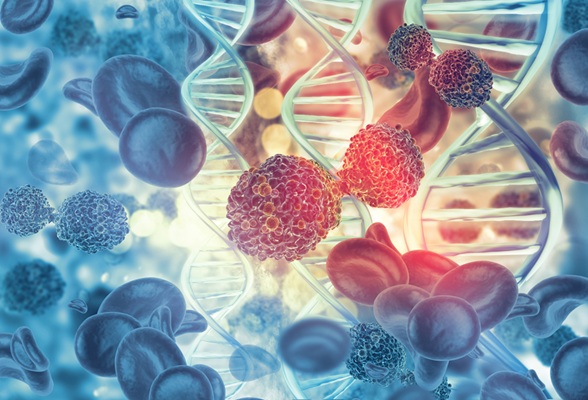
Automated Decentralized cfDNA NGS Assay Identifies Alterations in Advanced Solid Tumors
Current circulating cell-free DNA (cfDNA) assays are typically centralized, requiring specialized handling and transportation of samples. Introducing a flexible, decentralized sequencing system at the... Read more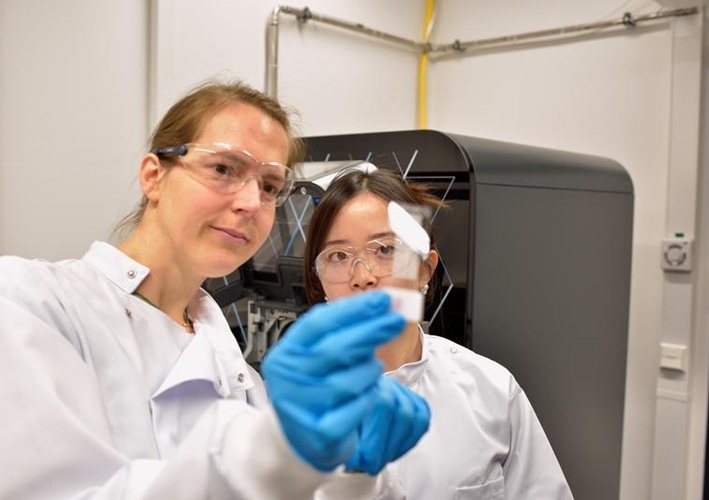
Mass Spectrometry Detects Bacteria Without Time-Consuming Isolation and Multiplication
Speed and accuracy are essential when diagnosing diseases. Traditionally, diagnosing bacterial infections involves the labor-intensive process of isolating pathogens and cultivating bacterial cultures,... Read more
First Comprehensive Syphilis Test to Definitively Diagnose Active Infection In 10 Minutes
In the United States, syphilis cases have surged by nearly 80% from 2018 to 2023, with 209,253 cases recorded in the most recent year of data. Syphilis, which can be transmitted sexually or from mother... Read moreHematology
view channel
First Point-of-Care Heparin Monitoring Test Provides Results in Under 15 Minutes
Heparin dosing requires careful management to avoid both bleeding and clotting complications. In high-risk situations like extracorporeal membrane oxygenation (ECMO), mortality rates can reach about 50%,... Read more
New Scoring System Predicts Risk of Developing Cancer from Common Blood Disorder
Clonal cytopenia of undetermined significance (CCUS) is a blood disorder commonly found in older adults, characterized by mutations in blood cells and a low blood count, but without any obvious cause or... Read moreImmunology
view channel
Stem Cell Test Predicts Treatment Outcome for Patients with Platinum-Resistant Ovarian Cancer
Epithelial ovarian cancer frequently responds to chemotherapy initially, but eventually, the tumor develops resistance to the therapy, leading to regrowth. This resistance is partially due to the activation... Read more
Machine Learning-Enabled Blood Test Predicts Immunotherapy Response in Lymphoma Patients
Chimeric antigen receptor (CAR) T-cell therapy has emerged as one of the most promising recent developments in the treatment of blood cancers. However, over half of non-Hodgkin lymphoma (NHL) patients... Read moreMicrobiology
view channel
New Blood Test Detects Up to Five Infectious Diseases at POC
Researchers have developed a prototype flow-through assay capable of detecting up to five different infections, with results that can be quickly analyzed and transmitted via a specialized smartphone app.... Read more
Molecular Stool Test Shows Potential for Diagnosing TB in Adults with HIV
Tuberculosis (TB), caused by the bacterium Mycobacterium tuberculosis, led to 1.25 million deaths in 2023, with 13% of those occurring in people living with HIV. The current primary diagnostic method for... Read morePathology
view channel
Groundbreaking Chest Pain Triage Algorithm to Transform Cardiac Care
Cardiovascular disease is responsible for a third of all deaths worldwide, and chest pain is the second most common reason for emergency department (ED) visits. With EDs often being some of the busiest... Read more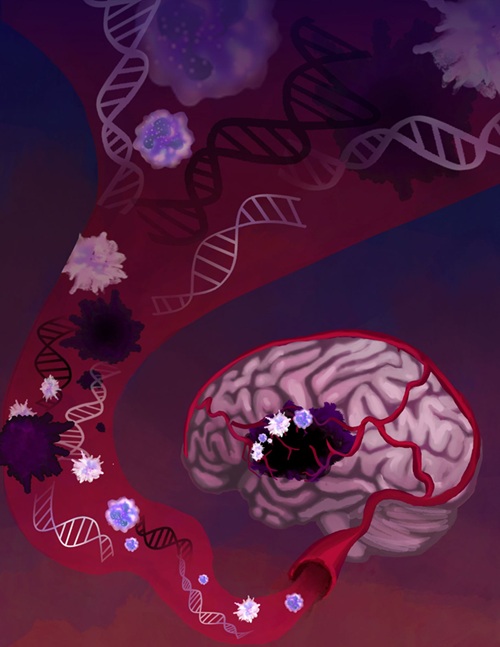
AI-Based Liquid Biopsy Approach to Revolutionize Brain Cancer Detection
Detecting brain cancers remains extremely challenging, with many patients only receiving a diagnosis at later stages after symptoms like headaches, seizures, or cognitive issues appear. Late-stage diagnoses... Read moreTechnology
view channel
Advanced Predictive Algorithms Identify Patients Having Undiagnosed Cancer
Two newly developed advanced predictive algorithms leverage a person’s health conditions and basic blood test results to accurately predict the likelihood of having an undiagnosed cancer, including ch... Read more
Light Signature Algorithm to Enable Faster and More Precise Medical Diagnoses
Every material or molecule interacts with light in a unique way, creating a distinct pattern, much like a fingerprint. Optical spectroscopy, which involves shining a laser on a material and observing how... Read more
Disposable Microchip Technology Could Selectively Detect HIV in Whole Blood Samples
As of the end of 2023, approximately 40 million people globally were living with HIV, and around 630,000 individuals died from AIDS-related illnesses that same year. Despite a substantial decline in deaths... Read more
Pain-On-A-Chip Microfluidic Device Determines Types of Chronic Pain from Blood Samples
Chronic pain is a widespread condition that remains difficult to manage, and existing clinical methods for its treatment rely largely on self-reporting, which can be subjective and especially problematic... Read moreIndustry
view channel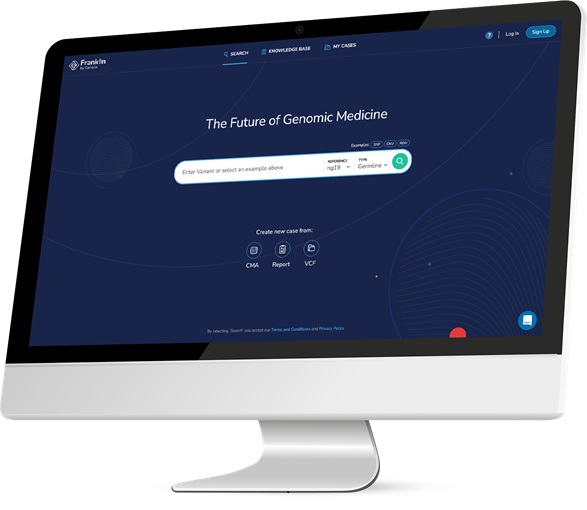
Qiagen Acquires NGS Analysis Software Company Genoox
QIAGEN (Venlo, the Netherlands) has signed a definitive agreement to acquire Genoox (Tel Aviv, Israel), a provider of artificial intelligence (AI)-powered software that enables clinical labs to scale and... Read more
Cepheid and Oxford Nanopore Technologies Partner on Advancing Automated Sequencing-Based Solutions
Cepheid (Sunnyvale, CA, USA), a leading molecular diagnostics company, and Oxford Nanopore Technologies (Oxford, UK), the company behind a new generation of sequencing-based molecular analysis technologies,... Read more
Grifols and Tecan’s IBL Collaborate on Advanced Biomarker Panels
Grifols (Barcelona, Spain), one of the world’s leading producers of plasma-derived medicines and innovative diagnostic solutions, is expanding its offer in clinical diagnostics through a strategic partnership... Read more







 RapiCardTM InstaTest (Serum-WB-Plasma).jpg)

